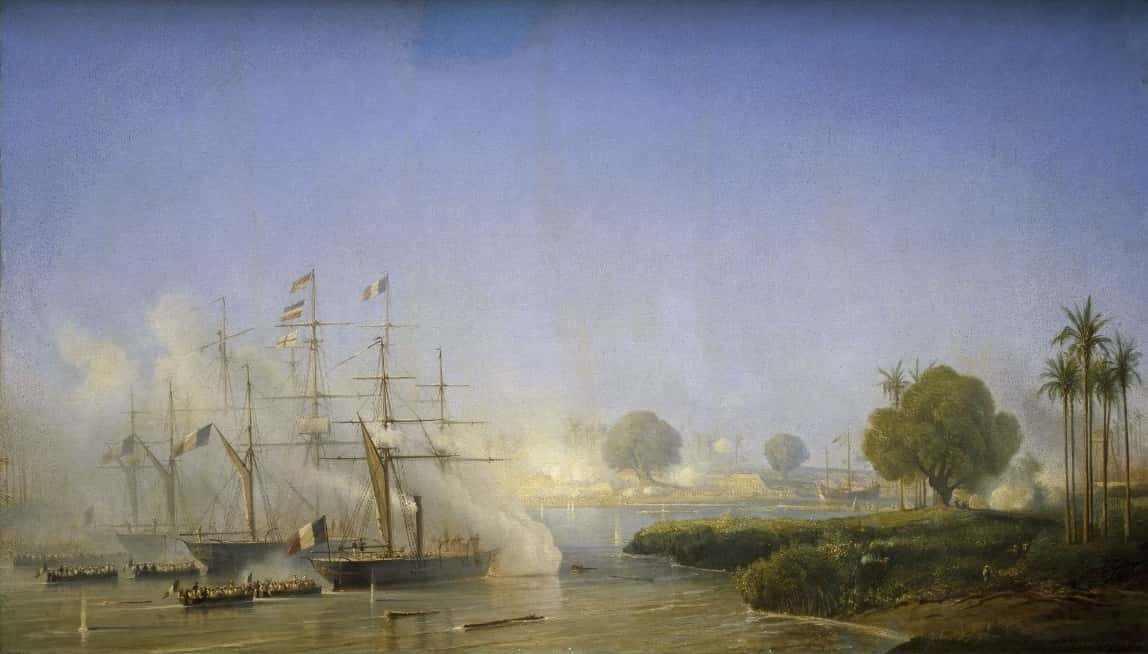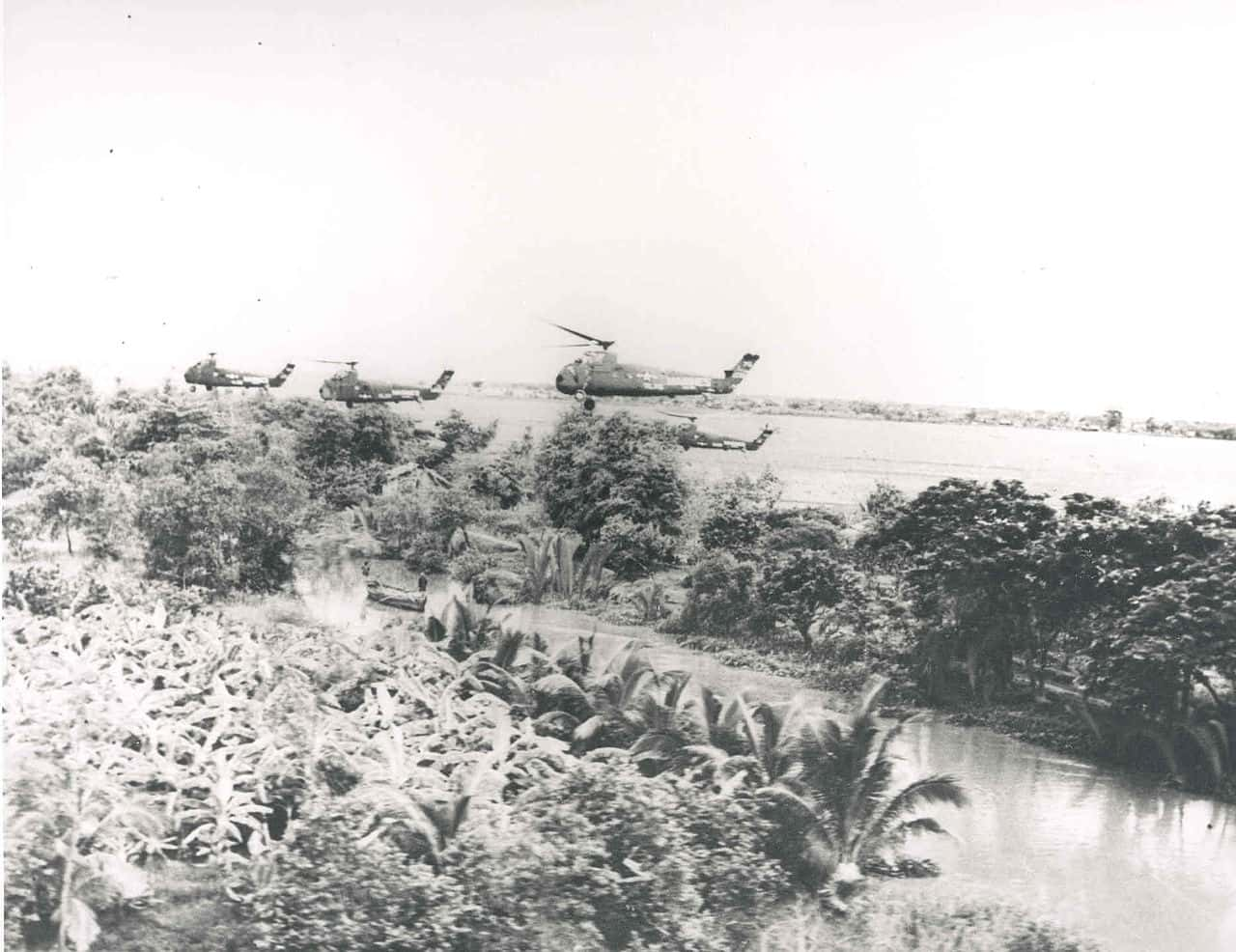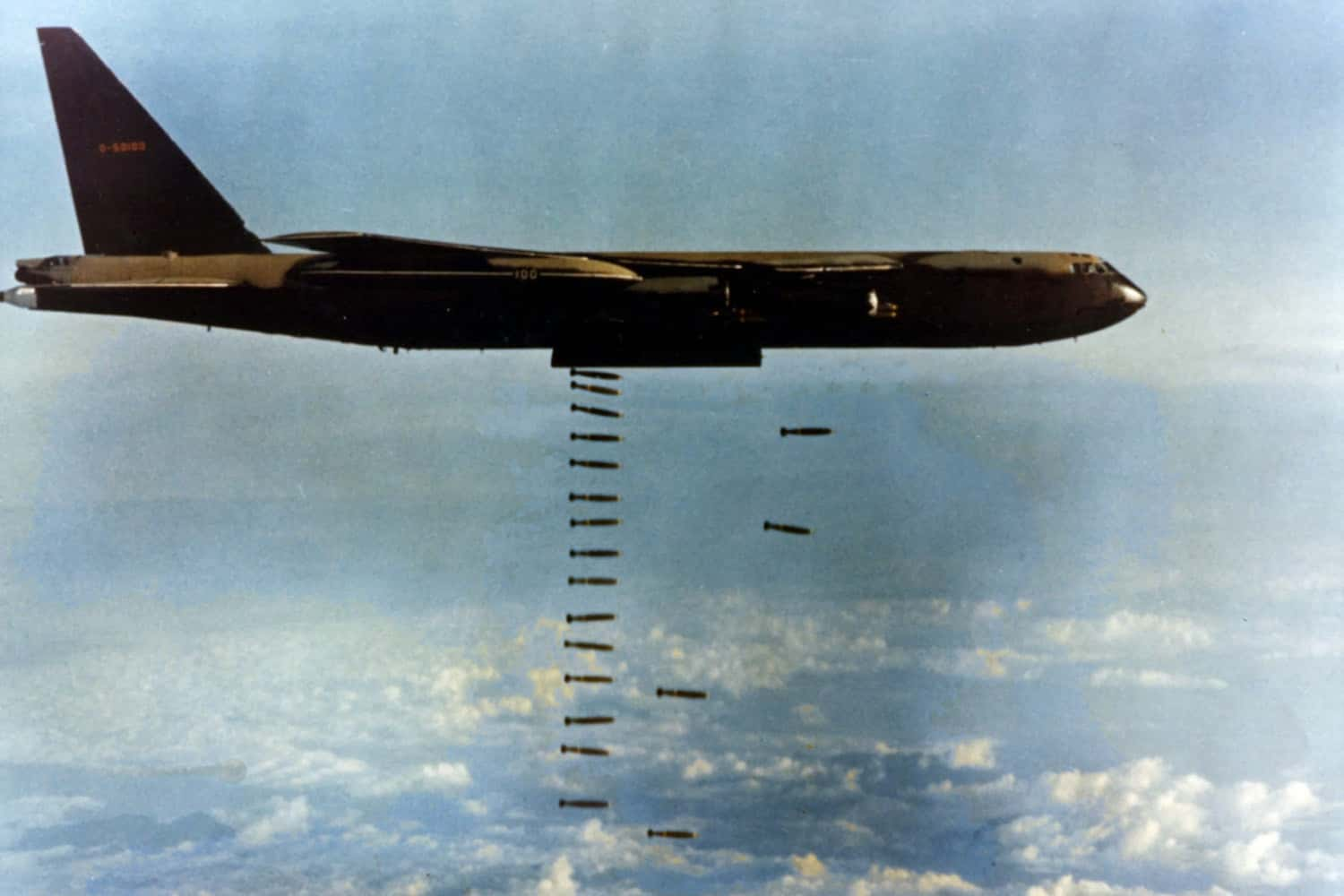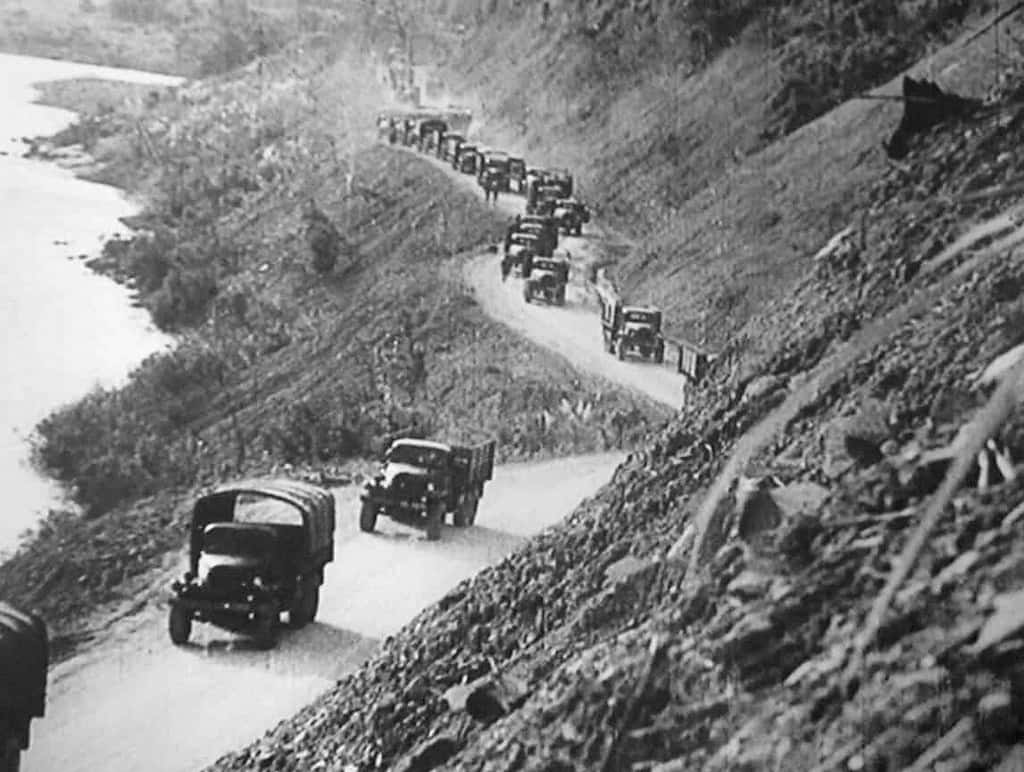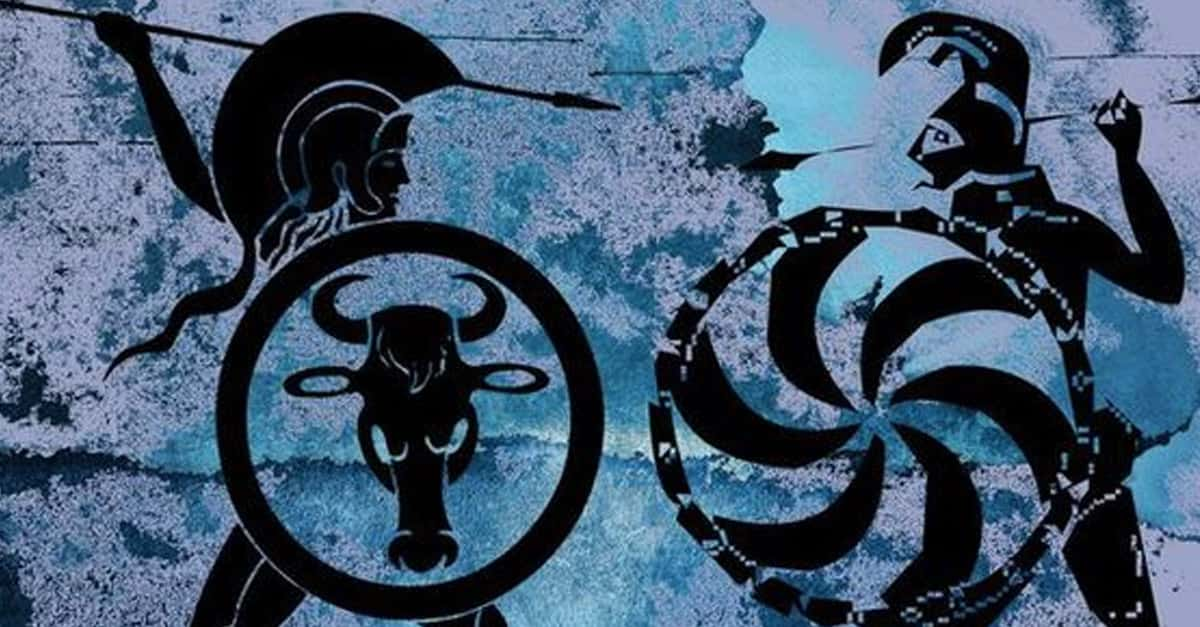"Anyone who isn’t confused doesn’t really understand the situation.” —Edward R. Murrow
“You will kill ten of us, we will kill one of you, but in the end, you will tire of it first.” —Hồ Chí Minh
The Vietnam War proved to be one of the most divisive in American history. People are still arguing about it today, so why not learn a little bit about it so you're a little better informed next time it comes up? Here are 42 facts about the conflict.
Vietnam War Facts
44. Stinky Cheese, Snails and Colonialism
After being a sovereign nation for almost 1,000 years, Vietnam was gradually conquered by the French from 1859 to 1885. The three regions of Vietnam were formally recognized as French Indochina in 1887.
43. A Preview of Things to Come
A nationalist movement grew throughout the 1920s, spearheaded by Emperor Hàm Nghi and a young Communist Revolutionary named Nguyễn Sinh Cung, later to be known as Hồ Chí Minh. This culminated in the Yên Bái mutiny of 1930, but it was put down fairly easily by the French.
42. Japan Stops By
Vietnam remained firmly under French control until the onset of World War II. The Japanese invasion of Vietnam in 1940 and the subsequent occupation allowed the country to be exploited for its natural resources to support the Japanese war effort. So many natural resources were mismanaged or removed that between one and two million Vietnamese starved to death in the Vietnamese Famine of 1945.
41. Now Is Our Chance
In 1945, less than two months after the Japanese surrender ended the war, a communist movement known as the Viet Minh, under the leadership of Hồ Chí Minh, took over the city of Hanoi and claimed a provisional government. The French were unamused and sent the French Far East Expeditionary Corps to quell the rebellion. The result was the First Indochina War, which lasted until 1954.
40. Au Revoir, Pierre
After defeat at the battle of Dien Bien Phu, the French had seen enough. At the Geneva Convention of 1954, French Indochina was dissolved and was replaced by the three separate countries of Laos, Cambodia, and Vietnam. Vietnam was further partitioned at the 17th parallel north, dividing the communist north from the south. This division was only supposed to last for two years and would end after the country-wide elections of 1956.
39. Here Comes Uncle Sam
The Geneva Accord called for a 300-day grace period to allow the citizens of Vietnam to settle in whichever region they chose. Over 600,000 fled the north under fears stemming from rumors of religious persecution. The United States aided them in an operation entitled Operation Passage to Freedom. Over half the people that relocated from the North did so on US ships.
38. The Split Becomes Permanent
Before the two-year period expired, an internal coup toppled the legitimate government of Bảo Đại in southern Vietnam. The new government, run by self-proclaimed president of the Republic of Vietnam, Ngô Đình Nhu, was not recognized by the international community, and the at this point the State of Vietnam ceased to exist. The divide between the south and Hồ Chí Minh’s communist North Vietnam, became permanent.
37. Kennedy Tries to Stop the Dominoes
During his inaugural speech in 1961, President John F. Kennedy vowed to "pay any price, bear any burden, meet any hardship, support any friend, oppose any foe, in order to assure the survival and success of liberty." To him, this included stopping communism in its tracks. Kennedy subscribed to the “domino theory,” that is, once communism gained a foothold in Asia, it would rapidly spread from country to country.
36. Ramping Up
By the end of 1962, the US had increased their presence in Vietnam from 900, when Kennedy took office, to 12,000 advisors. In addition, the US sent 300 helicopters and pilots. They were advised to avoid engaging the enemy, but it soon became obvious this was almost impossible.

History's most fascinating stories and darkest secrets, delivered to your inbox daily.
35. The Monks Take Action
As more and more people became disenchanted with South Vietnamese president Ngô Đình Diem, Nhu's brother, a number of Buddhist monks took to the streets and set themselves on fire to draw attention to the plight of their country. Shortly after, Kennedy realized Diem would have to go. Kennedy authorized $40,000 to the CIA in order to help overthrow Diem’s government and remove him from power. In November of 1963, the South Vietnamese army removed him from power and he was subsequently killed by a group of soldiers. Just three weeks later, Kennedy was shot down by an assassin’s bullet in Dallas, Texas.
34. Chaos Takes Over
Following Diem’s death, a number of military regimes were toppled in quick succession. This chaos and uncertainty allowed advances in the south by the Viet Cong. Unlike the regular army of North Vietnam (NVA), the Viet Cong used guerilla tactics to kill and demoralize the people and troops in South Vietnam. By the end of 1963, the Viet Cong controlled large areas of the countryside in the south.
33. The Gulf Widens
In August of 1964, the American destroyer USS Maddox was attacked by three North Vietnamese torpedo boats in the Gulf of Tonkin. In response, Congress passed the Gulf of Tonkin Resolution, which granted president Lyndon Johnson the authority to assist any Southeast Asian country who was threatened by “communist aggression.” The resolution gave America the legal justification to play a more active role in the conflict.
32. Bombs Away
In February of 1965, the NVA attacked a US Army base in Pleiku. The US responded with a three-year bombing campaign called Operation Rolling Thunder against North Vietnam that dropped over a million tons of missiles, rockets, and bombs. The US lost 900 aircraft and 745 crewmen were shot down. Though they inflicted $370 million in damage and 90,000 casualties, Operation Rolling Thunder failed to accomplish any of the stated goals and was widely viewed as a failure.
31. Rapid Escalation
The number of US troops in Vietnam went from 760 in 1959 to a peak of 536,000 in 1968, one quarter of them getting there by way of the draft. In addition, 1968 saw 7,660 Australian troops, 50,000 Koreans, 520 New Zealanders, 1580 Filipinos, and 6,000 from Thailand.
30. With Friends Like These
Major US allies Great Britain and Canada refused to send troops to Vietnam. They had seen the French get bogged down there and doubted whether or not the conflict could be won.
29. General Disarray
General William Westmoreland was the military commander in Vietnam from 1964 to 1968. His strategy was to use the superior firepower of the US forces to inflict heavy damages on the NVA and Viet Cong. By the end of 1967, however, his plan had resulted in a stalemate and was largely viewed as a military failure.
28. The Credibility Gap
In 1965, 61 percent of Americans approved of US involvement is Vietnam. To maintain that support, Johnson deliberately overemphasized the military gains and downplayed the losses. As these lies and distortions gradually became known, the phrase “credibility gap” was used to describe the area between what was reported and what was true. The phrase was first used in 1965 in a New York Herald Tribune article about the escalation of the war.
27. The Tet Offensive
On January 31, 1968, 85,000 combined Viet Cong and NVA regulars launched an all-out assault on five major cities, most provincial and district capitals, and over 50 hamlets throughout the countryside. They hit major targets in Saigon and even fought their way onto the grounds of the US Embassy before being repelled. Because January 31 marked the beginning of the Lunar New Year (Tet), which had traditionally been a time of an unofficial cease-fire, the US and South Vietnamese troops were initially caught by surprise. Within a week, however, they had recaptured most of the territory that had been lost in the offensive.
26. Bloodbath at Hue
The one place that the Communists had been able to capture and hold was the ancient city of Hue. They had taken over the city in the early days of Tet and had immediately executed over 2,000 South Vietnamese officials and prominent civilians. Eventually, the city was reduced to rubble by repeated airstrikes and the remaining piles of debris became excellent cover for the entrenched troops from the North. It took the marines a month of intense fighting to retake Hue.
25. The Fallout from Hue
After Westmoreland proclaimed the “end of the war is in sight” in September of 1967, the Tet Offensive and the Battle of Hue were both major wakeup calls for the American public. Thus, when Westmoreland requested an additional 200,000 troops in 1968, they began to see that Vietnam was not going the way it had been reported by the president and military officials. There became a groundswell of anti-war sentiment. Soon after he requested the additional troops, Westmoreland was called back to Washington and relieved of his command.
24. LBJ Goes Away
In 1968, the American public was almost evenly divided as to whether the US involvement was a mistake. Concern over the war was the number-one issue for people by a 2-1 margin, easily outpacing crime and civil rights. An astonishing two-thirds of Americans disapproved of Johnson’s handling of the conflict. With his approval rating in free fall, Johnson announced in March that he would not seek the Democratic nomination.
23. Dick Gets Tricky
Before the election, Johnson searched for a way to get the North Vietnamese back to the peace talks that had begun in May in Paris. They finally agreed in October to return, but only if the South agreed to stop their bombing campaign in the North. However, South Vietnam’s president, with apparent encouragement from the Republicans, decided not to return to the talks. Johnson ordered a cease to the bombing on October 31, but for Democratic candidate Hubert Humphrey it was too little, too late. On November 5, 1968, Richard Nixon became the 37th President of the United States.
22. A War for the Young and Poor
The average age for a soldier in Vietnam was 19, a full seven years younger than the average age of a soldier in World War II. Because anyone enrolled in college received a deferment, 80% of American ground troops came from the lower classes. What’s more, African-American and Latino youths were more likely to be assigned to combat roles than their white counterparts.
21. Heavyweight Protests
Various protests against the war sprung up soon after the Gulf of Tonkin Resolution. Groups mainly protested on moral or economic grounds. As the US involvement grew, so did the protests. The movement found a true champion in 1967 when heavyweight boxer Muhammad Ali was convicted of draft evasion and sentenced to five years in prison. Ali claimed his Muslim faith prevented him from fighting on moral grounds, famously saying, “I ain’t got no quarrel with the Viet Cong.” The Supreme Court overturned his conviction in 1971.
20. The Whole World is Watching
Anti-war protests entered a new realm when several thousand-people showed up to lend their support to anti-war candidate Eugene McCarthy. Chicago Mayor Richard Daley, a supporter of pro-war Democrat Hubert H. Humphrey, deployed 12,000 police officers and another 15,000 state and federal officers to help keep the protests at the Convention Center under control. However, their presence had the opposite effects and hundreds of protestors were gassed and violently beaten live on network television.
19. That’s the Way It Is
The Vietnam War was the first “televised war” in history. Journalists were allowed unfettered access to the front lines and their reports went out by satellite daily. Prior to 1968, most of the coverage was positive about the war and its mission. After Tet, however, news anchor Walter Cronkite went on the air and said for the first time that the conflict was “mired in stalemate.” From that point on, public opinion and news coverage turned decidedly negative.
18. Burn, Baby, Burn
In May 1964, young men began burning their draft cards. Within a year, this form of symbolic protest was being done at anti-war rallies across the country. While technically illegal, very few protestors were arrested for it, despite the fact that one case went all the way to the Supreme Court, where it was affirmed to be illegal.
17. Four Dead in Ohio
Beginning in 1964, thousands of students began to protest, having sit-ins and teach-ins to raise awareness about the atrocities of the war. They gradually grew in size and violence, with administration buildings being seized and/or burned by the protestors. Everything came to a head in May 1970 when four students were killed by National Guardsmen at a protest at Kent State. As a response, over four million students would go on strike at 450 colleges across the country. The Crosby, Stills, Nash and Young song "Ohio" was based on the event.
16. Atrocities at My Lai
One of the darkest chapters in the history of the US military occurred in the Vietnamese village of My Lai in March 1968. Under the auspices of looking for a Viet Cong battalion, soldiers from Company C rounded up the inhabitants of the village, including women and children, and systematically executed them. Many of the women were raped and mutilated before being killed. The final death toll was between 347 and 504 civilians. Only one soldier was convicted, Lieutenant William Calley. Calley was convicted of 22 murders and sentenced to life in prison. However, he served only 3 and a half years under house arrest before being paroled by the Secretary of the Army in 1974.
15. Peace with Honor
As the horrors of the war began to sway the opinion of the American public, part of Richard Nixon’s campaign pledge in the 1968 election was “peace with honor” in Vietnam. In 1969, he outlined the Nixon Doctrine, which called for the “Vietnamization” of the country. This was the process where American troops would withdraw from Vietnam and the country would ultimately be responsible for its own security.
14. Withdrawal Begins
Nixon began withdrawing a small number of troops after he took office in 1969. By April 1970, more than 265,000 personnel had been withdrawn. The remainder of the troops gradually ceased operations in the border areas and concentrated more on protecting the interior of the country. This led to the casualty total of 1970 being less than half of what it was in 1969.
13. Startling Revelations
The last straw for many Americans was the publication of the Pentagon Papers on the front page of the New York Times in 1971. Released by military analyst Daniel Ellsberg, one of the authors of the study, they outlined how past presidents had systematically lied and misled not just the public, but Congress as well, about American activities in Vietnam. It was very critical of the Johnson administration and exposed how the US had engaged in illegal bombings in Laos and Cambodia, as well as raids on the North Vietnamese coast.
12. Time to Go
After a crushing defeat of the ARVN in Laos, New Zealand and Australia removed all their remaining troops in 1971. Though Vietnamization appeared to be a failure, the US continued their own troop withdrawals as well. Even though the South Vietnamese officers had been trained by the US for up to fifteen years, they were still unprepared to fight by themselves.
11. The 1972 Election
Democratic challenger George McGovern campaigned against Nixon in 1972 on a platform of ending US involvement in Vietnam. However, Nixon went on to a landslide win, carrying every state except Massachusetts. Throughout the election, National Security Adviser Henry Kissinger continued secret negotiations with North Vietnam’s Le Duc Tho, and they reached an agreement on US involvement in Vietnam in October of that year.
10. The Deal Falls Apart
Soon after the accord was reached, South Vietnamese President Thieu demanded changes on a massive scale. North Vietnam then went public with the details and demanded changes of their own. The talks soon became deadlocked with no end in sight.
9. An Agreement is Reached
Nixon responded by conducting a massive bombing campaign of Hanoi and Haiphong in December of 1972. Nixon then threatened to cut off aid to South Vietnam and resume the negotiations without South Vietnam being present. The plan worked, and on January 15, 1973, Nixon announced the suspension of offensive action against North Vietnam. On January 27, 1973, the Paris Peace Accord was signed, ending US involvement in Vietnam and calling for a cease-fire.
8. Not Over Yet
After the US ceased bombing, North Vietnam went to work repairing the Hồ Chí Minh Trail and fortifying its supply lines. They were gearing for a massive invasion of the south that would take place during the 1975-76 dry season. They calculated this would be their last chance to invade before the army in the south was fully trained and functional.
7. Not Going Back
In 1973 the Case-Church Amendment was passed. It called for no more military involvement in Vietnam without Congressional approval in advance. Despite desperate pleas from Nixon and Kissinger, it passed both the House and Senate with veto-proof majorities.
6. Bad Timing
The Oil Crisis of 1973 following the Yom Kippur War in Egypt struck South Vietnam particularly hard. The Viet Cong attacked and recaptured the territory it had lost the previous year. Thieu announced the war had restarted and the Paris Peace Accord was no longer in effect.
5. Meet the New Boss
In 1974, Vice-President Gerald R. Ford became president after Nixon resigned as a result of the Watergate scandal. After being on the job for a month, Ford issued a presidential proclamation offering a pardon to all military deserters and “draft dodgers.” In January 1975 he requested aid packages for Vietnam and Cambodia but was turned down by the Democratic-controlled Congress.
4. Failed Test
After the US failed to respond to numerous “test incursions” into South Vietnam, the emboldened communists captured the Vietnamese provincial capital of Phuoc Long. This was the first salvo in an all-out assault on the South that ended with the fall of Saigon.
3. The End
After Ford announced the end of the Vietnam War and an end to all US aid on April 23, 1975, Operation Frequent Wind began. It was designed to evacuate American civilians and “at-risk” Vietnamese personnel. Over 7,000 people were helicoptered out from the American embassy and various points around the city. The last helicopter lifted off the embassy roof on April 30, 1975. For the US, the war was over, and for the first time in its history, it had lost.
2. The Toll
58,318 – Americans KIA (Killed in Action)
153,303 – Americans WIA (Wounded in Action)
224,000 – Allies KIA (Excluding Americans)
444,000 – NVA/VC KIA
627,000 – Civilian deaths
1,353,000 – Total Deaths
1. False Justification
The Gulf of Tonkin incident was used as the reason for the US entering into the conflict, but in 2005 declassified NSA documents revealed that the story given by the US military to the public was false. The USS Maddox actually fired on the NVA patrol boats first, not the other way around. Just as many people had suspected, the pretext for America entering the Vietnam War was based on distorted facts and erroneous information.
Sources: 1, 2, 3, 4, 5, 6, 7, 8, 9, 10, 11, 12, 13, 14, 15, 16, 17, 18, 19, 20, 21, 22, 23, 24, 25, 24, 25, 26


